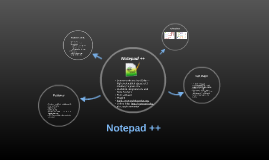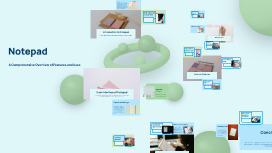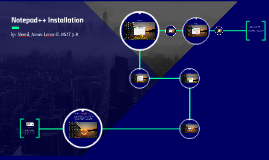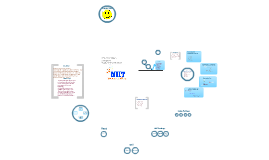Notepad
Transcript: Overview of Notepad Application Notepad is a basic text editor included in Microsoft Windows and other operating systems. It supports plain text files with a .txt extension, enabling users to create, edit, and format text with minimal distractions. Quick Drafting and To-Do Lists Brief History and Development Notepad excels in quick drafting and creating to-do lists, allowing users to manage tasks in a no-frills environment. Its ability to create simple text documents aids users in organizing thoughts, drafting letters, or compiling essential tasks without the burden of complex formatting options. Launched in 1983 as part of Windows 1.0, Notepad has gone through various updates over the decades. Initially designed for simple text manipulation, its development reflects user needs and technological advancements in text editing. Coding and Scripting Many programmers and developers prefer Notepad for coding small scripts or editing configuration files. Its simplicity allows for quick modifications without unnecessary complexities, making it a reliable tool for many coding tasks, especially in languages like HTML, CSS, and JavaScript. Introduction to Notepad Notepad is a simple text editor essential for quick note-taking and editing tasks, widely recognized for its user-friendly interface. It remains a staple tool for millions, offering basic functionalities yet allowing for various applications in personal and professional settings. Notepad Uses Notepad serves versatile functions, proving to be a valuable tool for various tasks, from personal note-taking to coding. Its simplicity and accessibility empower users to effectively manage their thoughts and projects. Personal Note-taking Notepad is widely utilized for personal note-taking due to its straightforward interface, allowing users to quickly jot down thoughts, reminders, or important information. The absence of distractions enables a focused writing experience, making it ideal for organizing daily tasks or brainstorming ideas. Line Numbers and Word Count Notepad Displaying line numbers and word counts is crucial for programmers and writers alike. Line numbering aids in code navigation and debugging, while word counts can help manage writing assignments or documents, providing better content flow control. Formatting Text While Notepad is primarily a plain text editor, it supports basic text formatting functions, such as adjusting font size and style in the associated Notepad++ version. This allows users to create more visually organized documents, enhancing readability and comprehension. A Comprehensive Overview of Features and Uses Advanced Features Notepad's advanced features enhance productivity and user experience, allowing for efficient text management. Key functionalities include search and replace options, text formatting, and displaying line numbers alongside word counts, catering to both casual users and programmers. Search and Replace Functionality Notepad's search and replace feature allows users to quickly locate specific text within a document. This function enhances efficiency, especially in lengthy texts, enabling bulk edits and updates without manually navigating through the content. Menu and Toolbars User Interface of Notepad The menu bar in Notepad provides essential functions such as File, Edit, Format, and Help, facilitating quick access to frequently used tools. Toolbars allow users to execute common tasks—such as opening, saving, and printing files—efficiently with minimal effort. The user interface of Notepad is designed for simplicity and efficiency, enabling users to focus on content without distractions. It features a straightforward layout that enhances user productivity. Layout and Design Notepad features a minimalist design with a plain background and simple text box format. This intuitive layout allows users to easily access their work without unnecessary complexity, focusing primarily on the text itself. Future of Notepad The future of Notepad may include enhancements such as collaborative features, cloud integration, and advanced formatting options. These updates would cater to evolving user needs in a digital work environment, ensuring Notepad remains relevant. Text Entry and Editing Saving and Opening Files Summary of Key Points Notepad provides a simple text entry interface allowing users to type and edit text easily. Features like cut, copy, paste, and undo ensure a smooth editing experience, making it accessible for creating and modifying documents with minimal distraction. Users can save documents in various formats, primarily .txt, facilitating ease of access and sharing. The straightforward open option allows for the quick retrieval of previously saved files, enhancing user workflow adaptability. Notepad offers a simple yet effective interface for text editing, supporting basic functionalities such as text entry, saving, and printing. Its use in personal note-taking, coding, and quick drafting underscores its

















